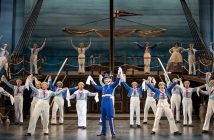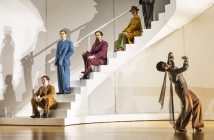It is a truth universally acknowledged that opera has a problem with its plots. The dramas – indeed melodramas – that unfold on stage are full of high passion and ludicrous plot devices. The plot, though, is just an excuse for all that glorious music, thrilling singing and often spectacular staging. We can suspend our disbelief and immerse ourselves in this other, more vivid, world.
Of course, not all opera plots are ludicrous. Verdi, for instance, chose Shakespeare as the basis of several of his operas – Macbeth, Falstaff, Otello. The Force of Destiny (La Forza del Destino), however, was less lucky, being stitched together from an original story by the Duke of Rivas, a scene lifted from a work by Schiller and a few extras from Antonio Ghislanzoni. The seams show.
It is one of the reasons, perhaps, that it’s performed comparatively rarely – in spite of some glorious musical moments. So, what is the plot? Well, Leonora, daughter of the Spanish Marquis of Calatrava is going to elope with Don Alvaro, a South American nobleman but her father discovers them and Alvaro accidentally shoots the Marquis who curses his daughter with his dying breath. The pair flee but become separated and each believes the other dead. Leonora’s brother, Don Carlo, is pursuing the lovers with a view to vengeance. Leonora becomes a hermit living in a cave.

Some time later, Alvaro has joined the army and rescues Carlo (also a soldier) from assassins. They both use false names so neither knows who the other is. They swear eternal brotherhood and when Alvaro is wounded he gives a package to Carlo to be destroyed in the event of his death as it contains all of his secrets. Carlo works out who Alvaro is but won’t open the package as that would be dishonourable. The doctor tells Carlo that Alvaro will recover. He is delighted – now he can kill him and Leonora too and this of course would be honourable. Years pass and Alvaro has become a monk at – surprise, surprise – the very same monastery where Leonora lives in a cave. Carlo tracks him down, the two fight and Leonora hears them. She recognises Alvaro who takes her to her dying brother. Carlo refuses to forgive her, she kills herself and Alvaro is left in despair.
So, not exactly a barrel of laughs and there are elements that are particularly tricky in the 21st century. One is the extreme religious fanaticism shown by many of the characters, another is the rallying cry to war for the honour it gives, and yet another is the idea of family honour and honour-killing. These themes are more suited to a remote village under the Taliban than the Spanish Civil War era chosen by the iconoclastic Catalan director Calixto Bieito in ENO’s new production at the Coliseum. Bieito likes to shock. He is known for his sexually graphic staging of Mozart’s Abduction from the Seraglio and a Verdi Masked Ball set in a men’s lavatory. This production does not aim to shock in quite the same way, but it does in its portrayal of war and the savagery that infuses his reading.
As the curtain lifts, a fierce spotlight directs its beam straight into the audience (a bit of a problem as you have spots before your eyes for the following five minutes). The set and the costumes are monochrome except for a lot of blood, an occasional flag and Leonora’s red hair, chopped off by the Father Superior in a gratuitouslycruel gesture – while the chorus of monks sings of angels bringing comfort. The walls of the houses that form the main sets teeter at precarious angles and projected on to them are goose-stepping armies, roaring soldiers, children bespattered with blood. There are scenes of starving refugees mocked as they beg for food, a pregnant woman kicked repeatedly, and a skittish shooting of kneeling prisoners. For Bieito, life is certainly nasty, brutish and short.

The music has its high points, and at times the ENO orchestra under Mark Wigglesworth soared (though surely it was a mistake to cut the glorious and well-loved overture back to its original prelude). The American soprano Tamara Wilson, making her ENO and British début, seemed daunted in the first act (perhaps perplexed by the plot) but her huge voice took flight in the last. Andrew Shore as the grumpy Friar Melitone brought a rare touch of (black) humour and James Cresswell’s lovely bass had a warmth that Bieito had stripped from his character. ENO favourite, Gwyn Hughes-Jones was a fine Alvaro with a complexity denied the other characters. And although Anthony Michaels-Moore as his enemy Carlo was one-dimensional by comparison (a man intent on vengeance, literally contorted with anger) the two together, particularly in the second act, provided some spine-tingling singing. Yes, the singers cope, but they are swimming against a tide, forced not by destiny but by their director into a grim interpretation of this powerful, yet flawed, opera.
The Force of Destiny at the London Coliseum until Friday 4th December 2015. Running time approximately 3 hrs 35 minutes including two intervals. For more information and tickets visit the website.
Anna Selby is the author of The Pocket Guide to Opera published by Pen and Sword Books.




